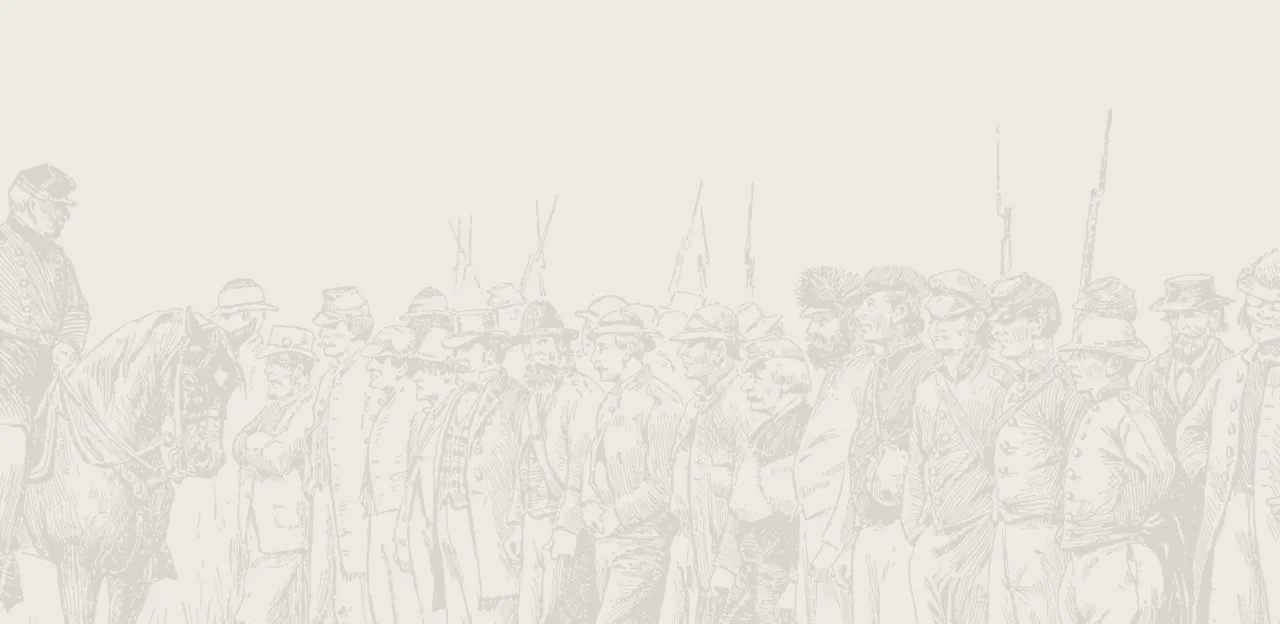Seven Pines

The Battle of Seven Pines
Fair Oaks
Choosing not to challenge the advance of the Army of the Potomac after the battle at Williamsburg on May 5, 1862, Gen. Joseph E. Johnston withdrew up the Virginia Peninsula toward Richmond as Maj. Gen. George B. McClellan pursued him. By the end of May, 1862, Johnston’s defensive line around the Confederate capital stretched from Mechanicsville covering the Virginia Central Railroad north of the city south to the James River. Knowing that his 60,000 men in seven divisions of infantry would probably not survive a protracted siege of the Rebel capital, Johnston looked for an opportunity to strike McClellan before he was surrounded.
Since Williamsburg, McClellan's army had advanced slowly but steadily toward Richmond. Reinforcements enabled him to establish two new army corps on the peninsula, in addition to his original three. A plan to send McClellan another corps was withdrawn after Union forces in the Shenandoah Valley suffered defeat at the hands of Gen. Thomas J. “Stonewall” Jackson’s Confederates. By the end of May, McClellan mustered around 105,000 men. Once outside Richmond, McClellan deployed his army facing the Confederates and moved his supply base forward to White House Landing. His army dangerously straddled the Chickahominy River, which ran roughly down the center of the peninsula. Three army corps were north of the river and two were south of it. In the spring, the river was known to swell with floodwaters, and the Confederates had destroyed most of the bridges in front of their lines. South of the river, the Rebels outnumbered the Yankees almost two to one.
Seizing the initiative, Johnston planned to overwhelm the IV Corps under Brig. Gen. Erasmus Keyes and the III Corps of Brig. Gen. Samuel P. Heintzelman isolated south of the river with a four-division attack. The Confederate assault began late on the morning of May 31 and was not well coordinated, although they succeeded in driving back Keyes and inflicted heavy casualties. A Union redoubt held by regiments under Brig. Gen. Silas Casey was overrun west of the Seven Pines crossroads. Timely reinforcements arrived from Heintzelman's corps to support Keyes and hold the Union left.
A mile north of Seven Pines, the Confederate division of Brig. Gen. William C. Whiting attacked the Federal right flank near Fair Oaks Station on the Richmond & York River Railroad. The Union line there was stabilized when reinforcements from Brig. Gen. John Sedgwick’s division of Brig. Gen. Edwin Sumner’s II Corps crossed the rain-swollen Chickahominy over Grapevine Bridge. Around dusk, Johnston was seriously wounded by rifle and artillery fire and command of the Confederate army devolved temporarily to Maj. Gen. Gustavus W. Smith.
Early on June 1, the Confederates renewed their assaults against the Federals who had brought up more reinforcements. Brig. Gen. Israel Richardson’s II Corps division posted along the railroad was attacked by two Confederate brigades. While fighting there, Brig. Gen. Oliver O. Howard’s right arm was shattered by a Confederate minie ball; the arm was amputated and Howard was out of action for several months. Brig. Gen. Joseph Hooker’s III Corps division attacked as the Confederates withdrew, ending the two days of fighting.
Both sides claimed victory at Seven Pines, but Jefferson Davis faced a crisis with losses elsewhere in the Confederacy that spring, and now his army commander in Virginia was seriously injured. Johnston's wounding had a profound influence on the war: Davis selected his military advisor Gen. Robert E. Lee to relieve Johnston. “This may be hailed as the harbinger of a bright fortune,” wrote one of Davis’ aides. By the end of the month, the more aggressive Lee initiated the Seven Days battles, leading to a Union retreat from the gates of Richmond.





